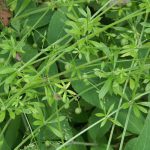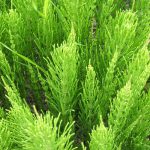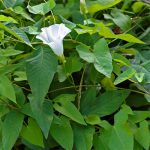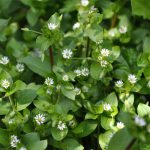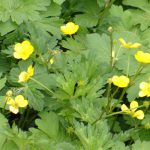Giant Hogweed
Heracleum mantegazzianum
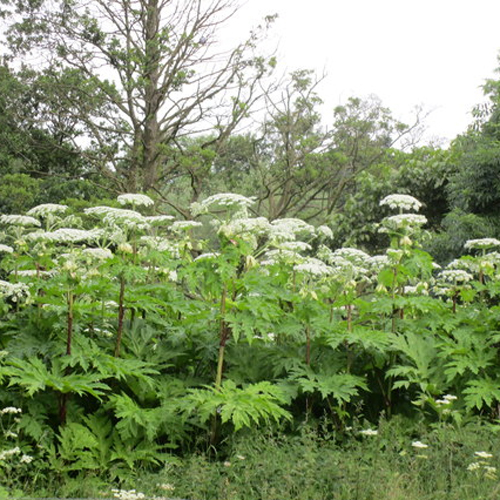
Giant hogweed (Heracleum mantegazzianum) is a close relative of cow parsley originally from Southern Russia and Georgia. It can reach over 3m (10ft) in height. Although this striking plant can be attractive in certain situations, most gardeners will want to eradicate it, as it is potentially invasive and the sap can cause severe skin burns. It is widely distributed in the wild and poses a serious risk to people who are unaware of its potential for harm.
Leaves
The leaves of Giant Hogweed above are generally larger, smoother and shinier than those of common hogweed. They normally have a more serrated edge too. The main stem of giant hogweed is reasonably smooth in comparison to common hogweed, except at the leaf joints which are markedly more hairy than the rest of the stem. The stem can also reach 5 inches in diameter. The main stem of giant hogweed can also develop purple blotches much like Hemlock.
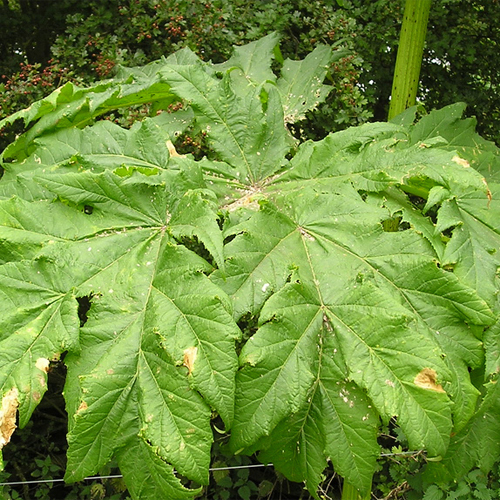
Flowers
The flowers are white and held in umbels, (flat-topped clusters, like those of carrots or cow parsley), with all the flowers in the umbel facing upwards. The flower heads can be as large as 60cm (2ft) across. It can reach a height of 3.5m (11.5ft) or more and has a spread of about 1-2m (3.5-7ft).
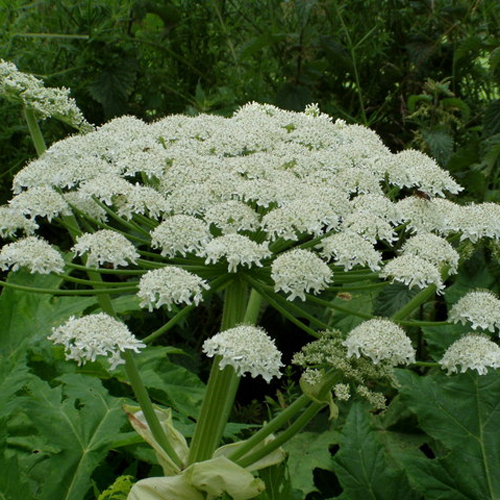
Preferred Habitat
Giant hogweed prefers moist fertile areas often near waterways. It is essential that weedkiller never under any circumstances enters waterways. Seek advice from the Environment Agency before undertaking spraying near rivers, streams and ponds. Common hogweed seems to prefer roadsides to riversides, but it will grow almost anywhere. Giant Hogweed is almost exclusively a riverside plant.
Weed Control
When controlling giant hogweed always wear gloves, cover your arms and legs, and ideally wear a face mask when working on or near it. Cut plant debris, contaminated clothing and tools are potentially hazardous too. Wash any skin that comes in contact with the plant immediately. Ensure that contractors working on your land are aware of the risks and competent to deal with this weed.
On a garden scale, appropriate measures include pulling up young plants by hand when the soil is moist. Do this in May when the giant hogweed has reached a reasonable height, but before it has produced its flowering spike. For larger plants it might be necessary to loosen the roots with a fork first.
Never let hogweed set seed, but allow the flower spike to form and then remove it before the flowers fade. At this stage, the plant is less likely to survive trimming than earlier in the year.
If using choosing chemical control. opt for a weedkiller that is appropriate for purpose by reading the label carefully before buying or using. Systemic weedkillers based on glyphosate are usually the best choice as these kill roots also.
Not Just a Weed
Do not touch giant hogweed. It is highly toxic and can cause severe burns and blindness.
It can be used for running sores and shingles but definitely leave it to the experts.
